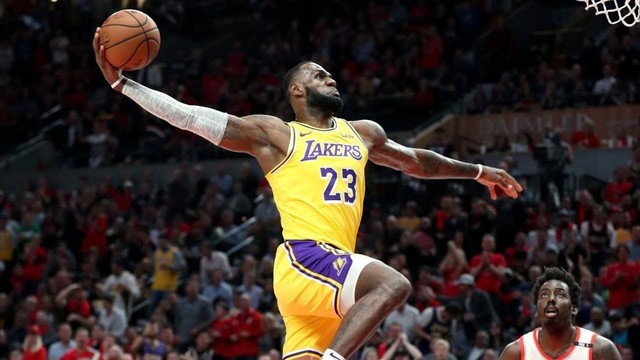Complete Guide to Becoming an Elite Athlete
Welcome to the Complete Guide to Becoming an Elite Athlete. My name is Rakim Anim (Coach Rak) founder of N1 Motion. As a Professional Performance Coach serving hundreds of athletes at all levels, from youth to the pros, my team and I have developed a complete guide to becoming an elite athlete. This manual is designed to educate athletes, coaches, and parents on what it takes to become an ELITE athlete and how to maximize athletic potential to accomplish personal goals and play at the highest level possible.
In this guide we will cover the following topics:
- Multi-Sport vs Sport Specific Athletic Training
- Psyche of ELITE Athletes
- How to Use Self Talk to Build ELITE Confidence
- Unlock ELITE Potential with Effect Performance Training
- Fueling for Optimal Performance
- Recovery is Everything
- Get Laser Focused with Goal Setting
At N1 Motion we are dedicated to empowering all athletes to accomplish their fitness and performance goals while maximizing their athletic potential. We hope you are able to take tangible information away from this guide that will empower you to reach personal success!
Multi-Sport vs Sport Specific Athletic Training
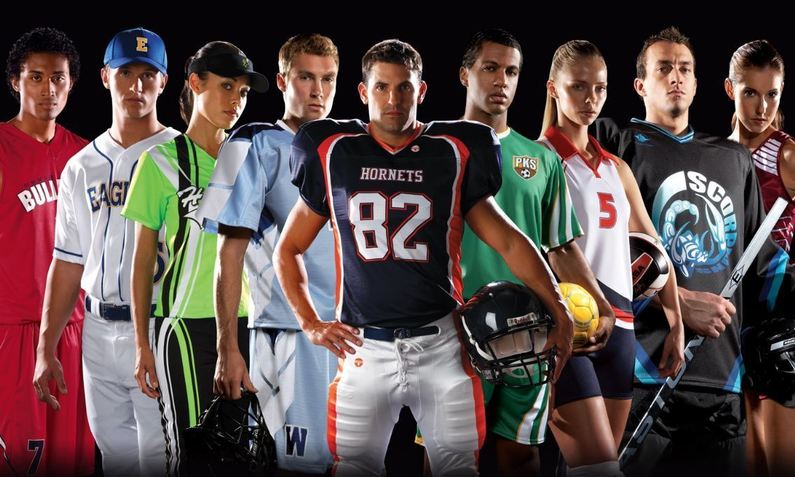
With more and more club teams and “elite” youth programs popping up in sports, there is a lot of pressure for athletes and parents to “specialize” in one sport year-round instead of participating in multiple sports throughout the year. Is one option better to become an elite athlete or do both have an equal chance of helping athletes stay healthy and optimize their opportunity to maximize their potential?
It is not uncommon for coaches, parents, and athletes to believe that specializing in a sport at an early age is the secret ingredient to becoming a world-class athlete, especially when you consider the success of athletes like Tiger Woods and Rafael Nadal, who excelled in their sports at an early age. However, research exploring elite athlete development suggests that athletes that specialize early and succeed at the highest level, are the exception to the rule, not the rule itself.
There is also a myth that participating in many different sports is not advantageous in advancing an athletes’ ability. Athletes are able to develop a variety of skills by playing multiple sports that will eventually transfer over to their primary sport. In fact, researchers have found elite athletes spent less time training in their primary sport before the age of 15 compared to their less successful peers.
A sports scientist by the name of Istvan Balyi created the Long Term Athletic Development model (LTAD). This model is a framework for an optimal training, competition, and recovery schedule for each stage of athletic development. Coaches who engage in the model and its practices are more likely to produce athletes who reach their full athletic potential. The principles of this research have been adopted by youth athletic associations globally as the framework for proper management of youth and adolescent growth and development processes. It also identified the critical periods of accelerated adaptation to training.
When considering which is better multi-sport vs. sport specific, it’s important to evaluate the long term effects of each scenario. Specializing in a single sport early can lead to problematic injuries, overtraining, and burnout. Although there are short term benefits to specialization, such as getting more repetition; doing this early on is more detrimental than a competitive advantage long term. Participating in multiple sports allows an athlete to acquire a variety of skills and experience different environments that will transfer as the athlete further develops and chooses his or her primary sport. Single sport specialization is advantageous as an athlete develops fundamental skills and adapts to optimal windows of trainability. The best time to specialize in a single sport is around 15 years old. At this time an athlete is physically and mentally prepared for higher training volume. At this age the athlete is more than able to make up for time NOT spent in early specialization.
Psyche of ELITE Athletes
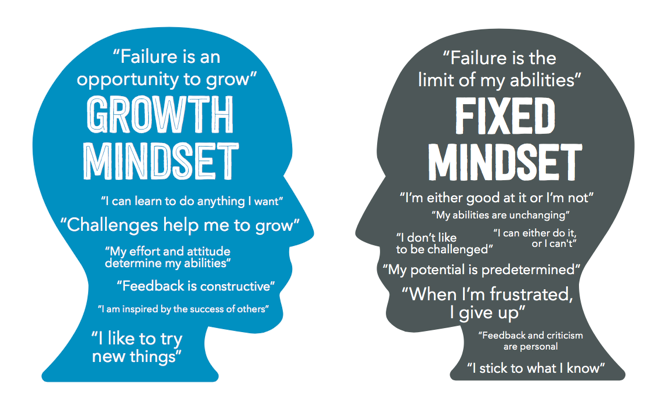
Have you ever wondered why elite athletes achieve greater success in their respective sport compared to everyone else? What separates Lebron James from Gerald Green? Tom Brady from Tony Romo, Serena Williams from Lauren Davis? Now, you may be thinking their physical ability is what separates them, and you may be right if we were comparing the great’s to you or I. But, that is not the case when comparing them to their pears. According to Dr. David Hesse Sports Scientist in Psychology, the biggest disparity between good and great athlete success, is their mindset.
Growth Mindset
The concept of a growth mindset was developed by psychologist Carol Dweck. A mindset, according to Dweck, is a self-perception or “self-theory” that you have about yourself. Believing that you are either “talented” or “not talented” is an example of a mindset. You may be aware or unaware of your mindsets, according to Dweck, but they can have a profound effect on learning achievement, skill acquisition, personal relationships, professional success, and many other dimensions of life.
There are two distinct mindsets “fixed” and “growth.” According to Dweck, “In a fixed mindset you believe your abilities are simply fixed traits.” People with this mindset don’t spend time developing their abilities. They also believe that talent alone creates success without effort.
If you have a growth mindset, then you believe your abilities can be developed through dedication, hard work, intelligence and talent. This view creates a love of learning and a resilience that is essential for great accomplishment. If you embrace the growth mindset you will accomplish more, accomplish your goals more quickly, and view challenges and failures as opportunities to improve your abilities and skills
The greatest athletes in the world have a growth mindset. One thing that they all have in common is they “buy in” to the process of what it takes to truly maximize talent and their abilities. Every detail of their day is planned and strategic to make them better in some way, shape, or form, than they were the day before. They are trying to maintain the highest level of performance for as long as possible. You may not be Lebron James, Tom Brady, or Serena Williams, but we can all look at what they do that makes them great and apply it to our own lives and personal situation. Whether your looking to make a team, reach a fitness goal, or just striving to be your best self, adopting a growth mindset will allow you to maximize your abilities and potential so you can accomplish your goals, dreams, and aspirations.
How to Use Self Talk To Build ELITE Confidence
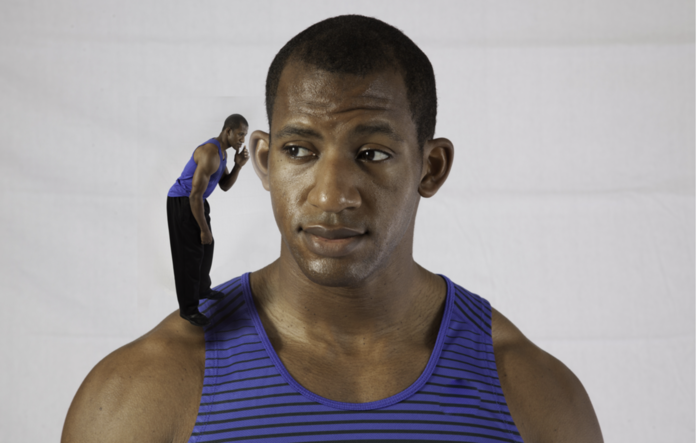
A huge part of motivation is what we tell ourselves, or self talk. Having positive self talk is key to success when it comes to achieving goals. According to expert neurologist we averaged 70,000 thoughts a day. These thoughts include both conscious and unconscious. Conscious thoughts are dictated by our surroundings and environment, along with past experiences. Our views, outlook on life, and perception of ourselves is determined by our different upbringings and life experiences. These experiences will dictate whether you have positive or negative self talk.
Self-talk is the act of talking to yourself either out loud or mentally. The messages you tell yourself will encourage and motivate you, or they will limit you if they are negative. It’s important to recognize your inner voice so you can identify when you’re having positive or negative self talk.
Here is negative self talk that you want to avoid.
- Mind reading: assuming we understand what other people are thinking without any real evidence.
- Overgeneralization: the habit of telling ourselves that a negative event is bound to continue happening in the future.
- Magnification: when we take our own errors or flaws and exaggerate them.
- Minimization: the mirror image of magnification, being dismissive of our strengths and positive qualities.
- Emotional reasoning: the habit of making decisions based on how we feel rather than what we value.
- Personalization: assuming excessive amounts of responsibility, especially for things that are mostly or entirely outside our control.
- Fortune Telling: the mental habit of predicting what will happen based on little or no real evidence.
- Should Statements: a kind of self-talk we use to try and motivate ourselves by always telling ourselves what we should and should not do.
In order to combat negative self talk use these positive self talk strategies
- Have a purpose higher than yourself
- Cut negative people out of your life
- Be grateful
- Don’t compare yourself to others
- Use positivity with others
- Believe in your success
- Don’t fear failure
- Replace negative thoughts with positive ones
- Positive affirmation
- Don’t dwell in the past
- Visualize your success
- Limit your intake of news and media
- Help others
- Be physically active
- Dream and set goals
When and how to be effective at self talk?
In order to be effective at self talk you must make it a habit. To start, every morning think of something that you are grateful for and give thanks. Then give yourself positive affirmations such as:
- I am determined and successful
- I am confident
- I am strong
- My life has meaning and purpose
- I am in control of my choices
- I am not afraid to fail because it will help me grow
How is self talk critical to building confidence?
Do you feel shy in front of a big audience? Do you have little belief in your talents and skills? Positive self-talk can make you feel more confident in these situations. Negative self-talk will hinder you from performing at your fullest by allowing doubt to come into your thoughts. With positive self-talk, you can put your doubts aside and focus on accomplishing the task. Confidence and success go hand in hand. Those who are successful at what they do, truly believe in themselves and their abilities. Confidence is so important to success that many psychologists believe that it is one of the primary prerequisites to personal and professional success. Be confident in everything you do by lifting yourself up with positive self-talk.
Unlock ELITE Potential with Effect Performance Training
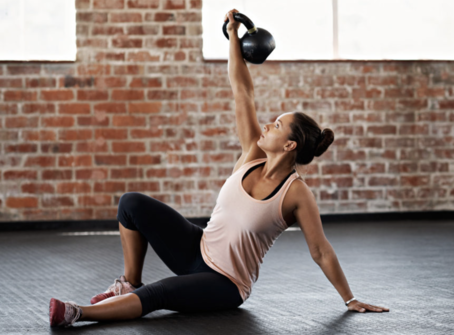
Your athleticism is the foundation of your sport specific skill. Without some level of athleticism, athletes are not able to effectively execute the skills that their sport demands. As competition increases, this becomes even more apparent. Look at the difference between a D1 basketball player and a D2 or D3 basketball player. Although there may be slight differences in skills, the biggest difference between the level of play is the athleticism and genetics of a D1 players compared to a D2 or D3 player. D1 players are typically taller, longer, and more athletic.
So, if we know athletes with superior genetics have the competitive advantage, how do we level the playing field? In full transparency there are multiple factors that contribute to athleticism. Genetics is a huge factor in the way that your body stores and produces elastic energy which is responsible for your explosive power and strength. Other factors that contribute to your athleticism include movement efficiency, mobility, strength, and your central nervous system. Without getting too technical, there are factors that you can control that contribute to your overall athleticism, and there are factors that you cannot control, like genetics. The good news is, with proper training, you can maximize your personal capabilities with a sound comprehensive program.
Comprehensive and Progressive Programing

I see a lot of performance programs that are based on random high volume routines that make athletes tired and leave them feeling depleted each workout. Although this type of training may get an athlete in shape short term, eventually this approach will cause training plateaus, burnout, or even injury.
An effective sports performance program that is designed to maximize athleticism should be comprehensive and progressive. A comprehensive program is one that is detailed and touches on all aspects of athletic ability (mobility, stability, coordination, agility, speed, strength, power, cognitive ability, and restoration to prevent injury). Touching on all of these athletic qualities daily and or weekly will allow athletes to fill each bucket, which will then enhance overall athleticism that will transfer to sport activity.
The other important aspect of an effective performance training program is progression. It is easy to get caught up in short term gains but unless an athlete plans to retire or quit in the next 3 months, it is extremely important to think about the big picture. You have to know and understand what is the long term goal and work backwards from there. If a 15 year old athlete aspires to play college sports but just started taking training seriously and doesn’t have much training experience, he or she has to focus on building a foundation of core strength, coordination, and mobility. The adage “you can’t build a house on toothpicks,” couldn’t be more true in this situation. Learning proper technique and improving movement efficiency early on, will go a long way and will increase the ceiling of an athletes athletic potential if they lay the foundation properly and early on in the training stage.
Once a foundation has been set, progressive overload is the key to long term sustained results. That means every 2-4 weeks there has to be an adjustment to the plan because our bodies are designed to adapt to stimulus. Once an adaptation occurs from completing a program consistently for 2- 4 weeks, the next phase of the program should increase volume (sets and reps), load (weight), or intensity (exercise selection or rest period). This same method should be followed with each new training phase in order to continue to progress toward maximizing athletic potential.
Best approach to training
- Improve coordination and movement efficiency (“can’t build a house on toothpicks”)
- Develop work capacity and endurance
- General strength
- Max strength
- Sport specific speed and power development
- Progressive overload
Fuel for Optimal Performance
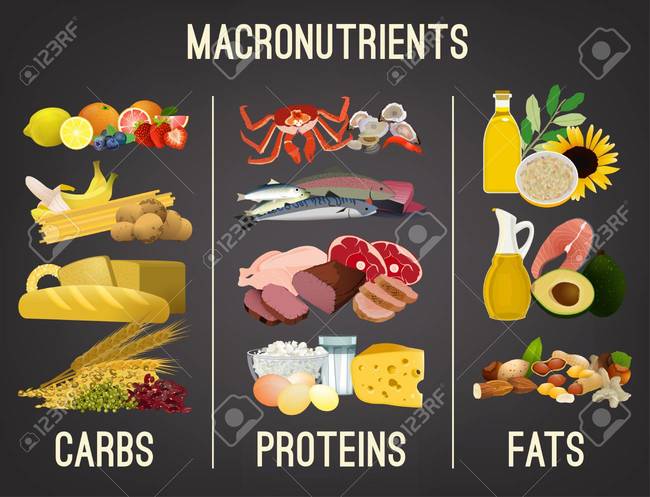
Elite athletes are finely-tuned machines, but without the right fuel even the most physically-gifted competitors don’t have what it takes to push themselves past the breaking point on guts and determination alone. That’s why proper nutrition is a cornerstone of elite performance, and why aspiring all-star athletes would do well to think about the food choices they make.
Proteins, carbohydrates and fats are the three main suppliers of nutrients in our diet. These are known as macronutrients or “macros”. Macros play a vital role in our ability to perform at our peak level. Athletes can practice for hours but unless they fuel their bodies properly they will not reach their peak performance. Food is the fuel for our body to be able to get stronger, faster, recover, and perform. If you feel tired, sluggish, have a decrease in performance, always sore muscles, injuries that won’t heal, or a crash in the middle of game or practice; these are all signs that you are not fueling correctly. Below is a guide for building healthy macronutrients into your nutrition plan.
Protein
Protein is essential to building and repairing muscle to enhance strength and power. It is commonly found in animal products, although it is also present in other sources, such as nuts and legumes.
Here are the benefits of consuming protein.
- Build and repair muscle tissue
- Heal tissues/injuries
- Building blocks of bones, muscles, cartilage, skin and blood.
- Keeps us full and satisfied
Protein Sources
- Beef:Grass fed ground beef, bison, elk, venison, pork
- Fish: Salmon, shrimp, tuna, scallops, halibut (or any white fish)
- Poultry: Eggs, Chicken, Turkey (white or dark meat)
- Dairy: Milk, Greek yogurt, cottage cheese, string cheese, cheese
- Beans: Beans (any variety? Or only specific ones) contain more protein than any other vegetable protein. Plus, they’re loaded with fiber that helps you feel full for hours.
- Nuts/Seeds: One ounce of almonds gives you 6 grams of protein-almonds, cashews, pistachios, peanuts, pumpkin seeds, chia/flax etc.
- Protein bars and Powders: Rx bar, Dales raw protein bars, bullet proof bars, oatmega bars, primal kitchen collagen bars, Epic or tanka meat bars
Aim to have a protein source at each meal (about 20-40g per meal).
Carbohydrates
Carbohydrates are sugars, starches, and fibers found in fruits, grains, vegetables, and milk products. Carbohydrates are very important to supplying energy for high performance during sport activities. There is a lot of information on carb-free diets, these are detrimental to an athlete. Carbs are the bodies preferred source of fuel. There are healthy and unhealthy carbs. Any carb that involves processed sugar would be a bad carb (cookies, cake, sugary cereal).
Benefits of Carbs
- Fuel training and help with recovery
- Preserves muscle and glycogen (fuel sources)
- Helps with recovery to be ready to go for next game or practice
Best Carb Sources
- Whole grains:oats, quinoa, wild rice, brown rice, faro, couscous, whole wheat pasta, whole wheat bread
- Fruits:Bananas great pre/post workout snack. Include a variety of fruits in your day
- Vegetables:starchy-sweet potatoes, squash, parsnips, beets, potatoes, peas, corn. Non-starchy-broccoli, cauliflower, celery, tomatoes, cucumbers, carrots, greens, asparagus etc. Make sure to have a veggie at every meal
- Beans:Great source of fiber to help stay full and satisfied
Aim to have ~ 40 – 80g of carbohydrates per meal.
Fats
Although it gets a bad rap, fat is an important nutrient that the body needs in order to function. Eating the right amount and the right form of dietary fat is key to maintaining good health and performance. Fat plays a key role in sports performance because it functions as an energy reserve.
- Helps fuel your workouts during low intensity bouts
- Primary fuel source at rest
- Slow Digesting to keep you feeling full and satisfied longer
Best Sources of fats
- Nuts and seeds-1/4 cup is approximate serving. Include all varieties.
- Avocados
- Dairy(2% or higher) Greek yogurt, cottage cheese, cheese, string cheese, milk, butter, ghee
- Oils-extra virgin olive oil, coconut oil, avocado oil
- Meats and fish-Wild salmon, grass fed beef, pork etc.
Aim for ~7-12g of fat per meal.
Healthy Smoothie Recipes: These incorporate a protein, a carbohydrate, and a fat.
1 scoop of protein powder
1 fist of veggies (spinach works great)
1 Cup of berries
1-2 TBSP of nut or seed butter
8 oz Milk or unsweetened almond milk
Ice if desired
OR
1 cup of Greek yogurt
1 big handful of spinach
1 banana
1-2 TBSP nut or seed butter
8oz of chocolate unsweetened almond milk
Balance is Key
The key to optimal nutrition fueling is consuming a variety of fruits and vegetables, healthy proteins, and carbohydrates. You want to limit your consumption of refined processed carbs like sugary cereal, syrups, candy, cookies, etc., the less you have, the better. Aim for one meal every 2-4 hours to meet your daily caloric requirements. This may vary from person to person based on sex, age, weight, height, and activity level.
Recovery is Everything
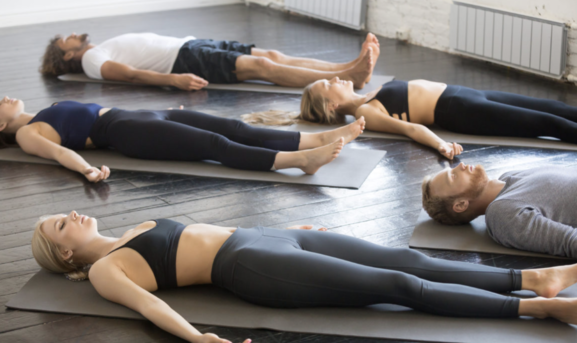
As an athlete, it’s easy to get caught up in the barbells, sleds, and plyo boxes. While what you do in the gym is unbelievably important, taking care of your body when you’re not at the gym is equally as important. I have put together a list of 4 tips for maximum recovery to keep you at the top of your game.
Get Moving
One of the worst things you can do on your recovery days is to be a couch potato. When we workout, our body produces byproducts like lactic acid, pyruvate, and NADH+. These byproducts pool up and cause our muscles to be sluggish, slow and sore. In order for our body to get rid of these byproducts, it requires blood flow to carry them out of our muscles. A blood flow elevated above resting will help to drain these byproducts from our muscles and speed up recovery.
Tips for moving during a recovery day:
- Go for a light jog/walk
- Just get your heart rate up, don’t push it
- Foam roll
- Spend 20-30 seconds on each of the major muscles
- Glutes/Hamstrings/Calves/Quads
- Lats/Upper back/Pecs
- Lacrosse ball
- Spend some time isolating specific knots or trigger points
- Place the lacrosse ball on the knot and slowly grind into it
- Stretch
- Stretch the major muscles. If you neglect mobility, over time you will develop pain and injuries because the muscles aren’t functioning the way they should.
- Spend 20-30 seconds on each muscle
- Dynamic stretching combined with a light jog/walk is a great combo
- Try this 5 minute mobility routine
Eat Right
Proper fuel is absolutely essential for competitive athletes. In order for our bodies to function properly at the competition, they need fuel. Not only do they need fuel, they need the right fuel. Think of your body like a car. You could fill your car up with bleach and it would run … but not for long. If you’re filling your body with junk food and missing out on the right nutrients, your body won’t perform the way you want it to for very long.
Tips for improving your nutrition:
- Portion size properly
- Hydrate properly
- Balance it out
Sleep
One of the biggest factors that significantly influences your body’s performance is sleep. Proper sleep has been shown to increase performance, motivation, concentration, and improve cognitive performance. While we are sleeping, our bodies go to work. During sleep, your body increases the hormone productions that lead to rebuilding muscles, increasing the tensile strength of your actin and myosin within the muscle fibers. It is recommended for athletes to get anywhere from 7-9 hours of sleep each night. If you are in the middle of pre-season or heavy training times, an extra hour is typically recommended. If you can’t manage to get that much sleep at night, naps can be a way to add up to that sleep total.
Tips for getting good sleep:
- Get in a rhythm and stick to it! Plan ahead, finish homework/work in time that you can get to bed at a consistent time
- Avoid being on your phone in bed, the stimulus will fight your body wanting to sleep
- Avoid caffeine in the second half of the day
Get Laser Focused with Goal Setting
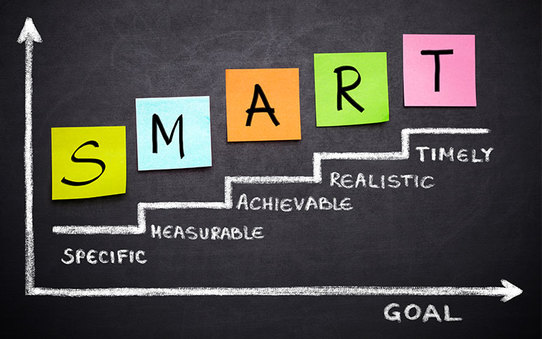
Have you ever set a goal and struggled to attain it? Goal setting is all about gaining clarity and breaking down your end goal into smaller goals. Goal setting is great for accountability and productivity. Studies have shown that goal setting increases your productivity and success rate between 11 to 25 percent. So just by writing this stuff down and thinking; “OK what’s the desired outcome that I want and then what are the steps that I need to take to get there?” You’re going to be up to 25 percent more successful just by taking these actions when you set goals.
Three keys for successful goal setting can be broken down into three separate sub goals, outcome goals, performance goals, and process goals. Breaking down your goals this way makes it easier to organize your thoughts and really wrap your head around what it is that you’re actually trying to accomplish and what you need to do to get there.
Outcome Goals
The number one question you want to ask yourself is what the main thing you want to accomplish is. What do you really want to get out of your goal? This will help you figure out what you want your outcome goal to be. Outcome goals are very binary and they’re hugely motivating. When most people set goals, this is the primary type we see. An example of this would be, make the all conference team. Or maybe you’re striving for some type of winning based goal like winning a championship, race, or all state honors.
Outcome goals have a set time and specific outcome. Outcome goals are highly motivating and inspire us to accomplish what we want to achieve. The other two goal types helps create the blueprint to accomplish your outcome goal.
Performance Goals
Outcome goals are the final destination. Performance goals are benchmarks or milestones that are going to help you along the way. Something you want to ask yourself; “what are the performance standards that are going to help you reach your desired outcome?” Performance based goals are just a standard, and like I said, these are benchmarks or milestones that tell you, you’re almost to your destination. These smaller measures of success are extremely important and give you the energy boost you need to continue working towards your outcome goal. If my outcome goal is to make the all conference team, averaging 21 points per game would be an example of a performance based goal. If I hit this smaller goal daily or weekly throughout the season, I will put myself in a good position to reach my outcome goal.
So to keep on pace to make the all conference team, you need to rank amongst the best players in the conference. This means being dominant on a consistent basis and leading your team to a successful record along with individual achievements. As you can see, it’s just taking your outcome goal and then segmenting that down into smaller more digestible size performance goals that you can measure on a weekly, daily, or monthly schedule based on how far out your outcome goal is. That way, you can give yourself little measures of success that keep you motivated. If you only focus on outcome based goals and you don’t have these kind of more short term goals you’re going to lose sight and you might get steered off track.
Process Goal
As I mentioned before, the third goal is going to be process goals and these are my personal favorites. These are little daily reminders that you can give yourself to make sure that you stay on track.
Process goals are the most important of the three goal types. Process goals are very tangible and easy to track. Yes I did this or no I did not. But if you track these process goals on a daily or weekly basis you should hit your performance goals. If you hit your performance goals, then you’ll hit your outcome goals. An example of a process goal is making 500 shots 6 days a week.
Notice the process goal is measurable and you can even track progress by tracking shooting percentage and how many attempts it took to make 500 shots each day. Now these examples are specific to basketball but you can adjust the three goal types to make them personal to your own goals based on your specific sport.
So again, start with an overarching goal and work your way backwards so you have the outcome, performance, and process goals. One big advantage of doing this is getting your thoughts organized and just what you need to do to get to where you want to go.
Those are very important but let’s think about other life goals whether it’s relationship related whether it’s religion related no matter what that is. Let’s try and really wrap our minds around one of the three to five areas in your life that you want to improve upon. Set SMART goals or get a specific understanding of exactly what you want to accomplish those goals and then kind of move on to each one of those categories. It’s not uncommon to have three to five goals going on at once. As long as we organize it with first setting smart goals for the outcome and then breaking that down into performance and process goals for the short term so you can stay on track so you can accomplish your goals. That’s the number one thing we want for you guys in order to succeed and set yourselves up for success.
Now that you have acquired the knowledge of what it takes to become an ELITE athlete, the next step is most important, and that is actually applying this information and executing. At N1 Motion we are dedicated to empowering ALL athletes to reach their personal goes and help them maximize their potential. We do this by providing excellent coaching comprehensive training solutions to meet each athletes needs. Visit our website www.n1motion.com or contact us today info@57q.540.myftpupload.com for more info on how we can help serve you.

